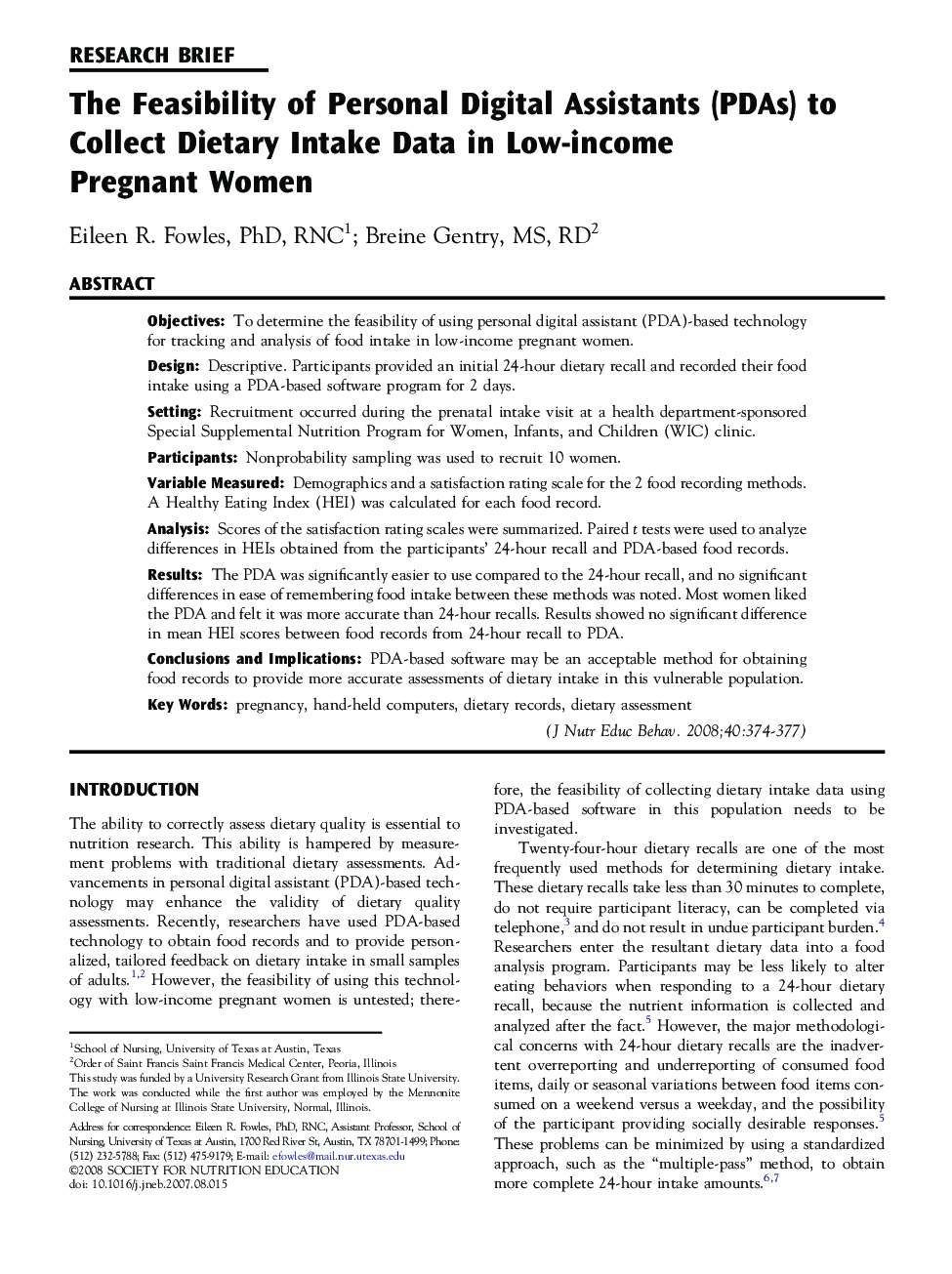| Article ID | Journal | Published Year | Pages | File Type |
|---|---|---|---|---|
| 363174 | Journal of Nutrition Education and Behavior | 2008 | 4 Pages |
ObjectivesTo determine the feasibility of using personal digital assistant (PDA)-based technology for tracking and analysis of food intake in low-income pregnant women.DesignDescriptive. Participants provided an initial 24-hour dietary recall and recorded their food intake using a PDA-based software program for 2 days.SettingRecruitment occurred during the prenatal intake visit at a health department-sponsored Special Supplemental Nutrition Program for Women, Infants, and Children (WIC) clinic.ParticipantsNonprobability sampling was used to recruit 10 women.Variable MeasuredDemographics and a satisfaction rating scale for the 2 food recording methods. A Healthy Eating Index (HEI) was calculated for each food record.AnalysisScores of the satisfaction rating scales were summarized. Paired t tests were used to analyze differences in HEIs obtained from the participants' 24-hour recall and PDA-based food records.ResultsThe PDA was significantly easier to use compared to the 24-hour recall, and no significant differences in ease of remembering food intake between these methods was noted. Most women liked the PDA and felt it was more accurate than 24-hour recalls. Results showed no significant difference in mean HEI scores between food records from 24-hour recall to PDA.Conclusions and ImplicationsPDA-based software may be an acceptable method for obtaining food records to provide more accurate assessments of dietary intake in this vulnerable population.
